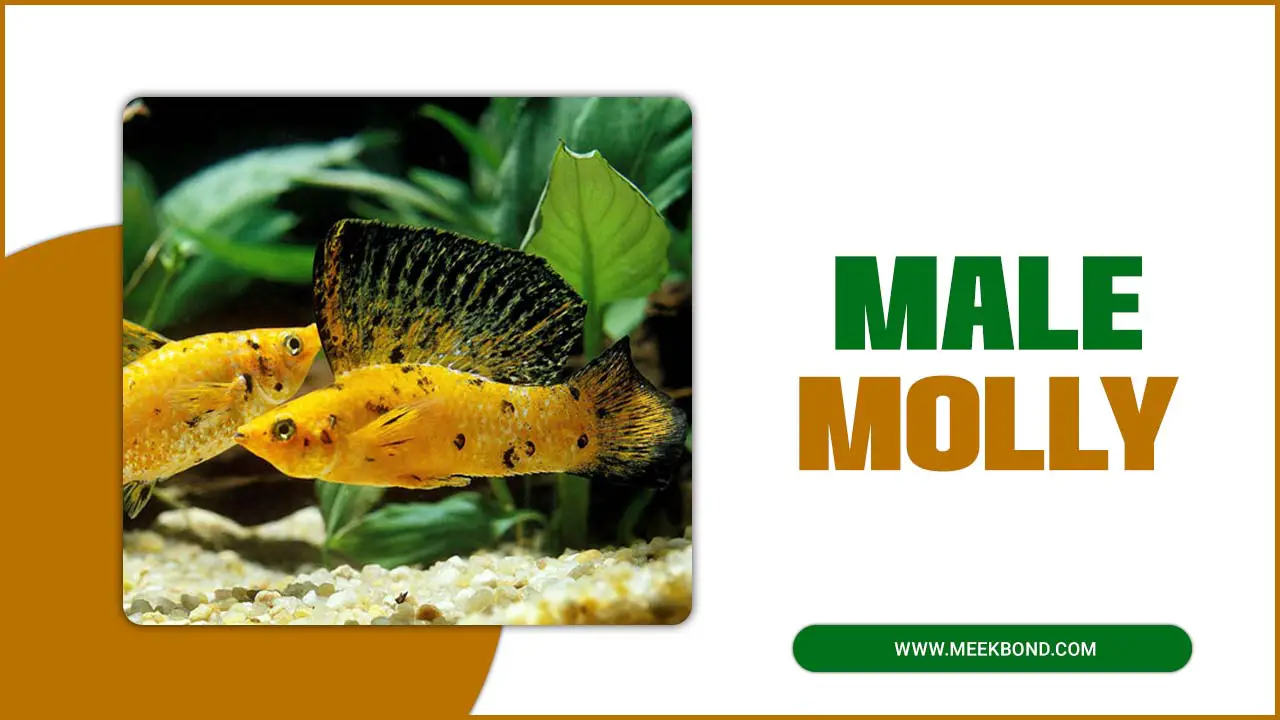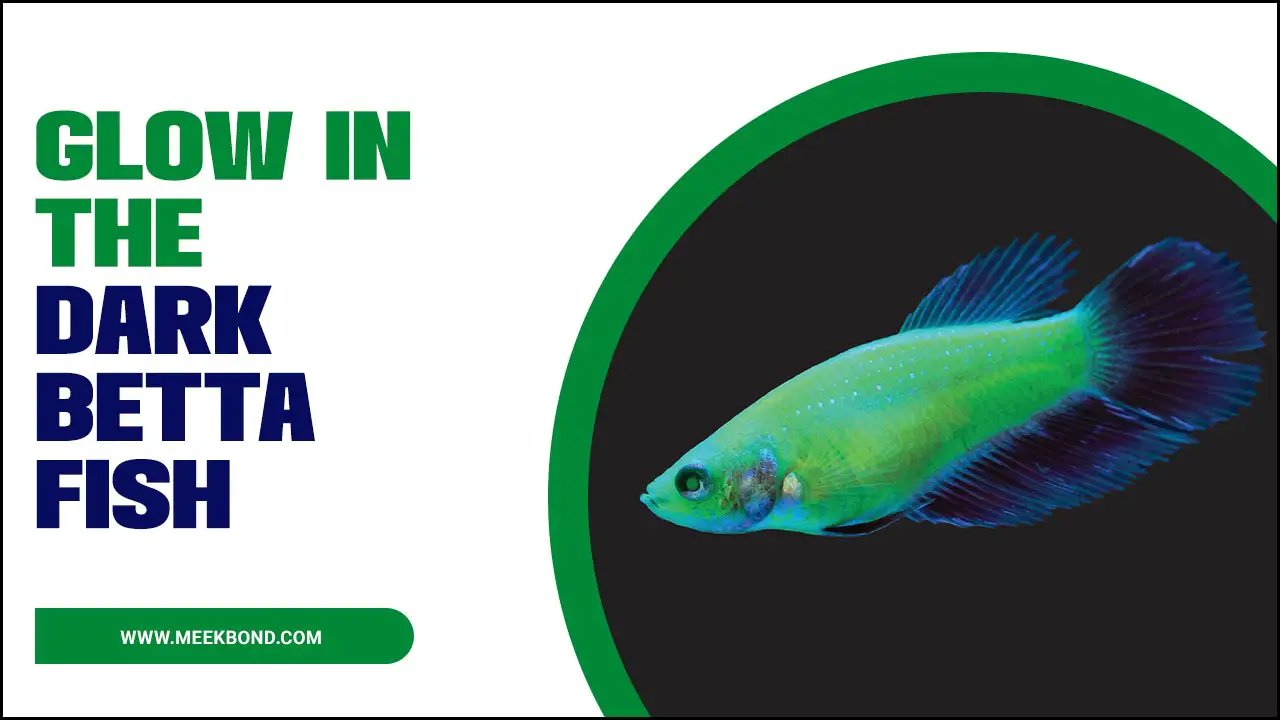Goldfish are one of the most popular freshwater fish in the world, known for their bright colors and playful personalities. However, like all pets, goldfish are prone to health issues that can cause concern for their owners.
One common problem that often goes unnoticed is the development of goldfish ulcers. These painful sores can lead to serious health problems if left untreated, making it essential for owners to identify and treat them as soon as possible.
Here, we will explore the causes, symptoms, and treatment options for goldfish ulcers and provide important tips for preventing them. We will also discuss the importance of maintaining a clean. And healthy aquarium environment plays a crucial role in preventing the development of ulcers and other health issues in goldfish. With the right knowledge and care, goldfish owners can ensure their beloved pets remain happy and healthy for years.
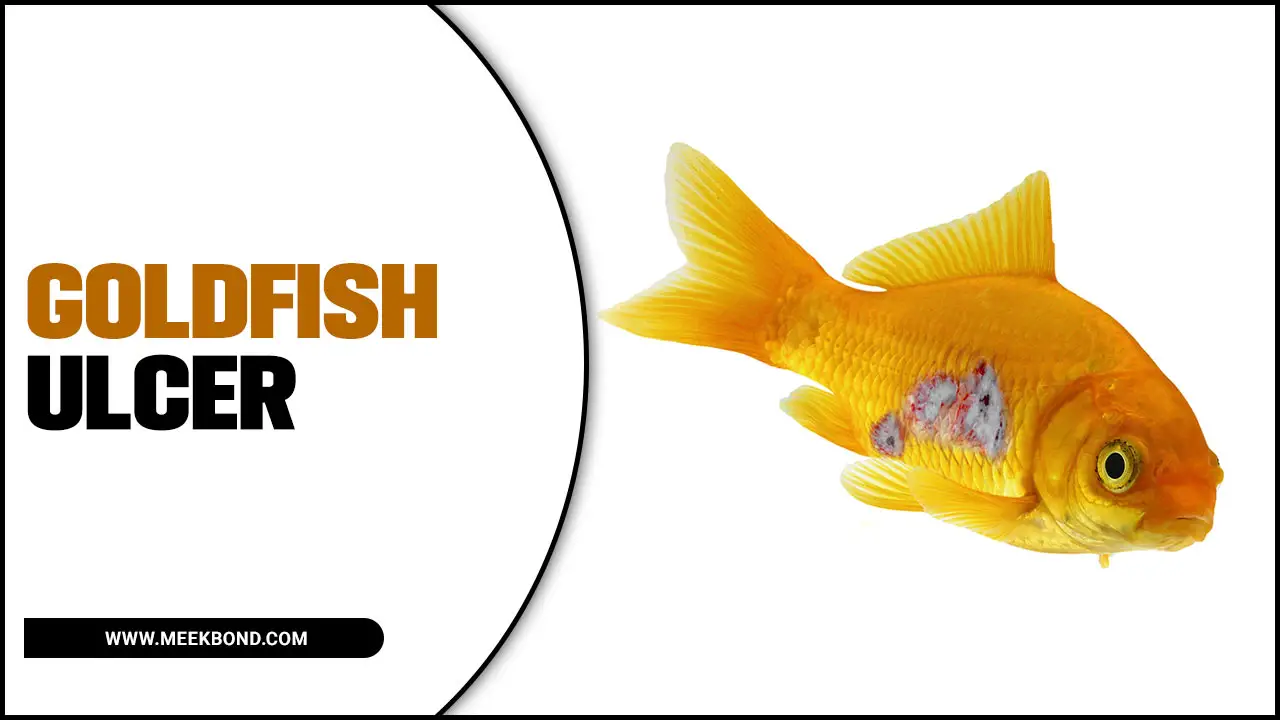
Goldfish Ulcers Disease Treatment
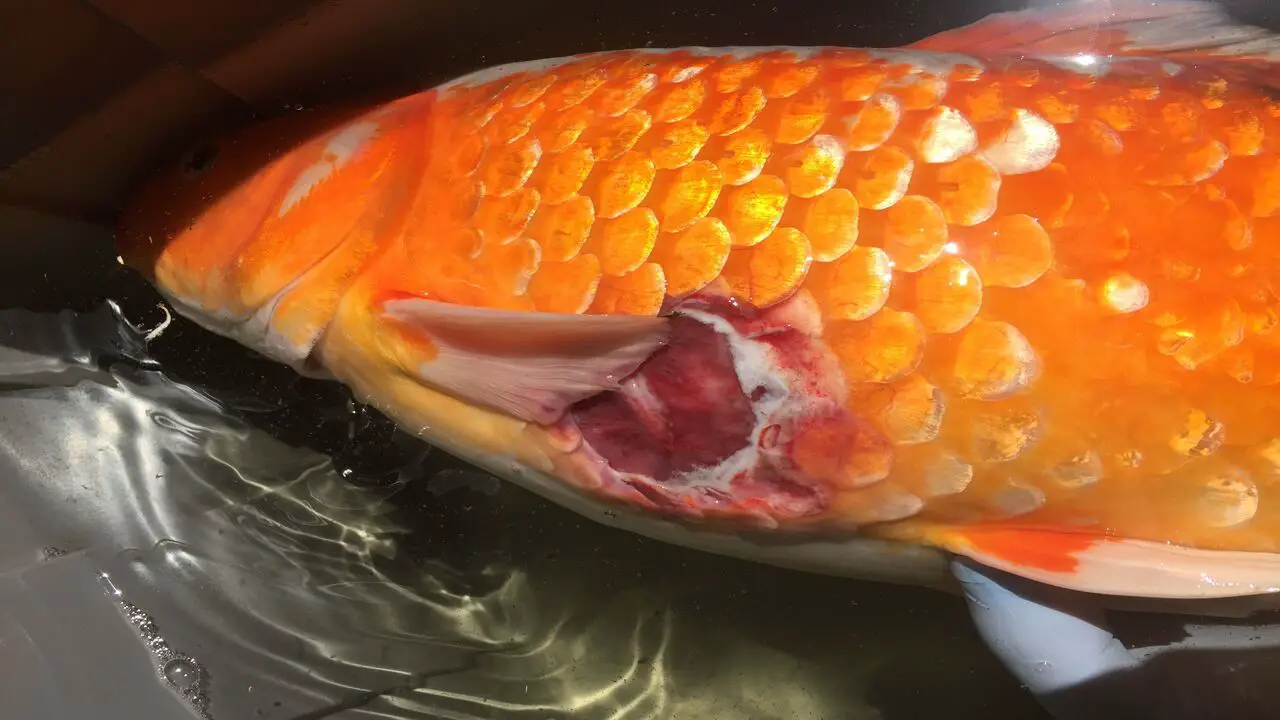
Goldfish ulcers are a common problem among aquarium enthusiasts. These sores can occur for various reasons, including poor water quality, rough handling, or bacterial infections. Identifying the cause of the ulcers is important to treat them effectively. Sometimes, improving water conditions and providing a stress-free environment can help the fish heal independently. However, if a bacterial infection causes ulcers, it may be necessary to use antibiotics or other medications to clear up the problem.
Prevention is key when it comes to goldfish ulcers. Regularly testing the water and maintaining proper filtration can go a long way in preventing infections. Additionally, avoiding overcrowding and providing a balanced diet can help keep goldfish healthy and less susceptible to illness. If you notice your goldfish has an ulcer, don’t panic. Most goldfish can recover from this common ailment with prompt attention and proper treatment.
Types Of Goldfish Ulcers
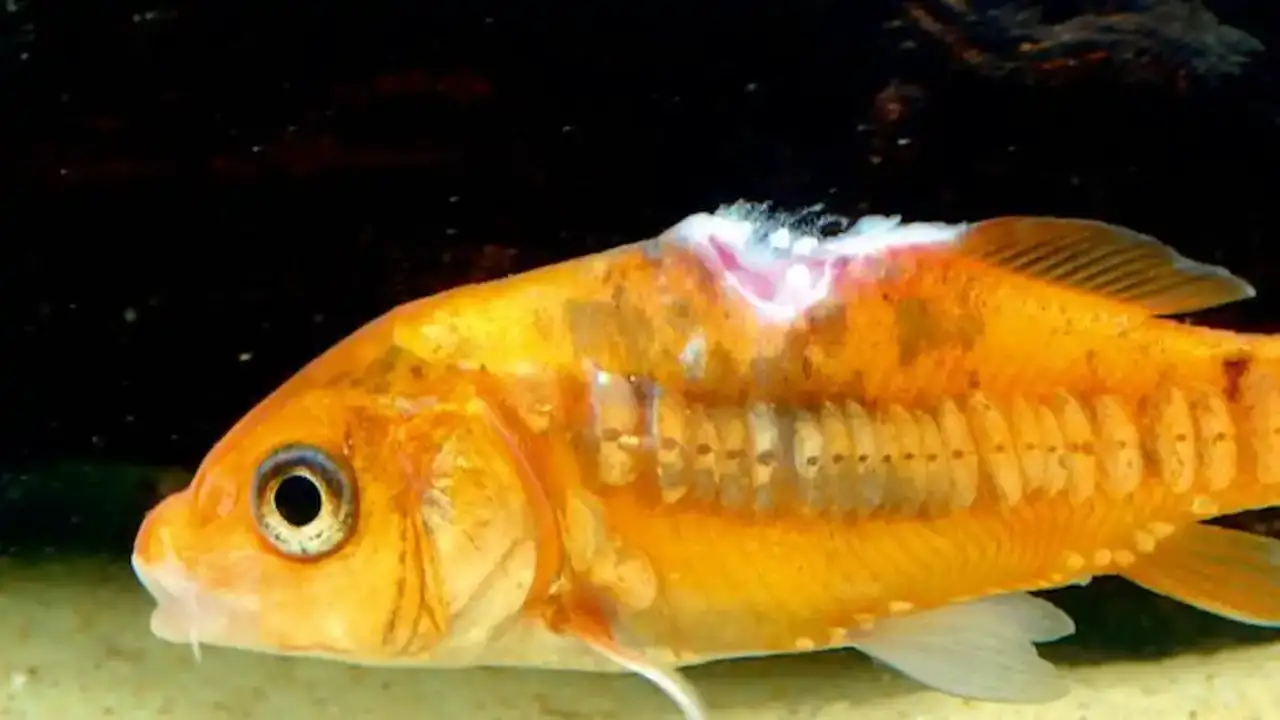
Goldfish ulcers are a common ailment that affects these beautiful aquatic creatures. There are different goldfish ulcers, each with its specific characteristics and causes. For instance, bacterial ulcers are caused by bacteria such as Aeromonas and Pseudomonas, which attack goldfish’s skin and cause sores.
On the other hand, fungal ulcers are caused by fungi that attack the fish’s skin and underlying tissues, leading to deep ulcers that may become infected. Parasitic ulcers are caused by parasites such as anchor worms, which bore into the fish’s skin. And cause wounds that may become infected.
The symptoms of goldfish ulcers may vary depending on the type of ulcer. However, most ulcers are characterized by a loss of scales, redness, and open sores that may expose underlying tissues. In severe cases, the fish may appear lethargic, lose appetite, and experience weight loss.
Signs And Symptoms Of Goldfish Ulcers
Goldfish ulcers can be a troubling condition for any fish owner. These ulcers are a common issue in goldfish and can cause by various factors such as poor water quality, injuries, and infections. If left untreated, these ulcers can cause serious harm to your goldfish and even lead to death. As a responsible pet owner, it is important to recognize the signs. And symptoms of goldfish ulcers to prevent any further damage.
Some common symptoms of goldfish ulcers include red, swollen areas on the goldfish’s body, loss of appetite, and lethargy. If you observe any of these symptoms in your pet goldfish. It is important to take immediate action to prevent the condition from worsening. One of the easiest ways to prevent goldfish ulcers is by maintaining clean water in your fish tank. Regular water changes, filtration, and testing can help eliminate harmful bacteria or toxins that can cause goldfish ulcers.
Diagnosis Of Goldfish Ulcers
Goldfish ulcers are a common health problem that affects many pet owners. These ulcers are open sores that develop on a goldfish’s body, often caused by bacterial infections. Diagnosis of goldfish ulcers can be tricky, as the symptoms can also indicate other health problems. For example, goldfish ulcers may appear as red spots on the body, but other infections or parasites can also cause these spots.
A veterinarian specializing in fish care can help diagnose goldfish ulcers by examining the fish’s physical appearance and taking a sample of the ulcer for testing. The sample can examine under a microscope to determine the type of bacteria causing the ulcer, which can treat with antibiotics or topical medications. It is important to note that early diagnosis and treatment of goldfish ulcers are crucial to prevent further health complications or even death.
Treatment Options For Goldfish Ulcers
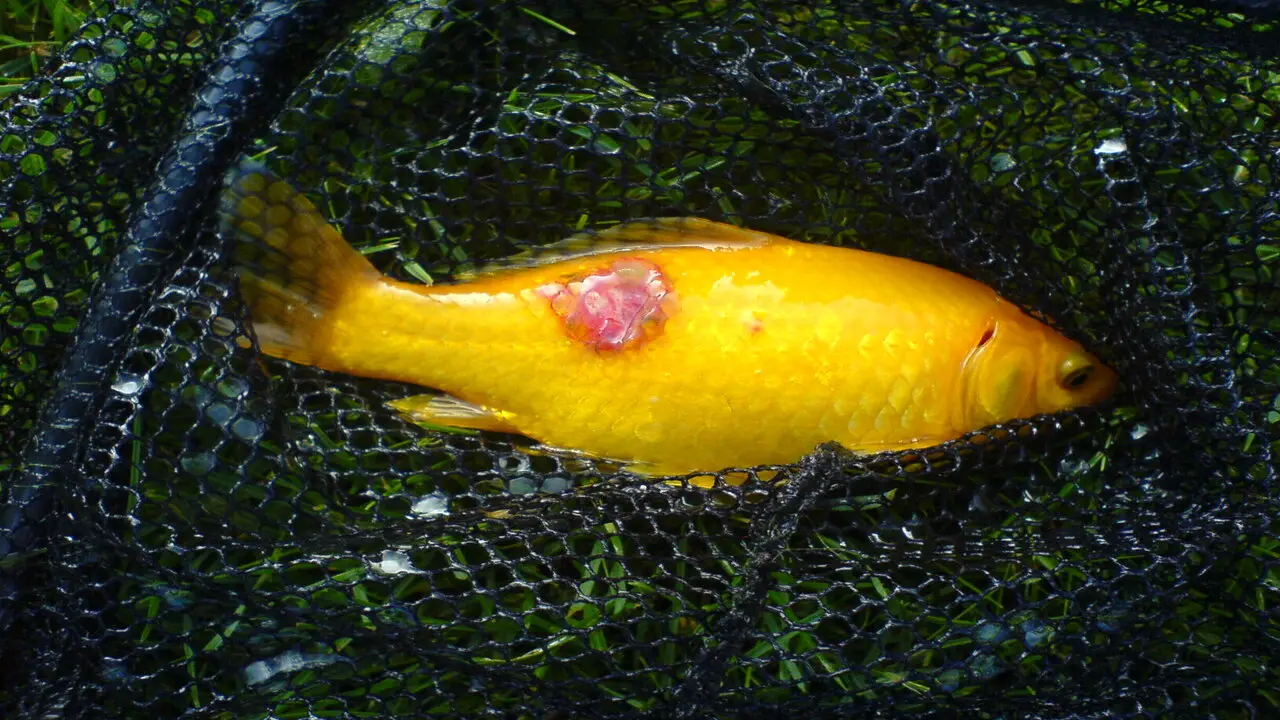
Goldfish ulcers are a common problem in aquariums. And various factors, including poor water quality, injuries, and bacterial infections, can cause them. When left untreated, these ulcers can lead to serious health problems and even death for your fish. Fortunately, several treatment options are available to help heal and prevent goldfish ulcers. One of the most effective treatments is antibiotics, which can administer orally or added to the aquarium water.
Topical treatments, such as medicated ointments or baths, can also effectively treat ulcers. In addition, it is important to maintain a clean and well-maintained aquarium environment with proper filtration. And regular water changes, as this can help prevent the development of ulcers in the first place. It is also important to monitor your fish closely for any signs of illness or injury and to seek veterinary care if you suspect your fish may have an ulcer or other health problem.
Preventing Goldfish Ulcers
Goldfish ulcers can be a common and concerning issue for aquarium owners. If left untreated, these small sores can quickly escalate into a serious health problem for your goldfish. Fortunately, you can take several preventative measures to keep your fish healthy and free from ulcers. Firstly, maintaining good water quality is essential. Regular water changes and filtration can help eliminate harmful bacteria and maintain a healthy environment for your fish.
Additionally, feeding your goldfish a balanced diet rich in vitamins and minerals can boost their immune system. And help prevent ulcers from developing. It’s also important to avoid overcrowding your aquarium. And ensure your goldfish have plenty of swimming space to reduce stress and the likelihood of injury.
Lastly, observing your fish can help you catch any signs of ulcer development, such as redness or swelling around the area. If you notice an ulcer, it’s important to consult a veterinarian or aquatic specialist for proper treatment immediately.
When To Seek Help From A Veterinarian

Goldfish are a popular pet due to their bright colors and playful nature, but like all animals, they can suffer from health issues. One common health issue that goldfish experience is ulcers, open sores on the skin that various factors, including poor water quality and injury, can cause.
It is important to monitor your goldfish for any signs of ulcers, such as redness, swelling, or white or yellow spots on their skin. If you notice any of these symptoms, seeking help from a veterinarian specializing in aquatic animals is crucial.
While some minor ulcers may heal independently with proper care and water quality, more severe cases may require medical treatment, such as antibiotics or topical medications. Delaying treatment can lead to serious complications, such as secondary infections or death. Therefore, it is essential to seek help from a veterinarian as soon as possible if you suspect your goldfish has ulcers.
Conclusion
While it may seem daunting to deal with, with the right knowledge and care, your Goldfish Ulcers can be back to swimming happily in no time. Remember to keep your tank clean and your water parameters stable, and seek professional help if necessary. Goldfish are one of the most popular aquatic pets around the world.
However, owning a goldfish often requires proper care and maintenance to ensure its health and well-being. One common issue many goldfish owners encounter is the development of ulcers. These ulcers can manifest as red sores on the fish’s body and can be caused by various factors, including poor water quality, parasites, and bacterial infections.
FAQs
What Causes Goldfish Ulcers, And How Can They Be Prevented?
Various factors, including bacterial infections, poor water quality, physical injuries, and nutritional deficiencies, can cause goldfish ulcers. To prevent goldfish ulcers, it is important to maintain good water quality by performing regular water changes, providing adequate filtration, and avoiding overfeeding. Additionally, ensuring that the fish have a balanced and nutritious diet can help boost their immune system and prevent the development of ulcers.
What Are The Symptoms Of Goldfish Ulcers, And How Can They Be Treated?
Symptoms of goldfish ulcers include red or white sores on the skin, lethargy, loss of appetite, and hanging at the surface of the water.
Treatment for goldfish ulcers involves cleaning the tank or pond, improving water quality, and administering medication such as antibiotics or antifungal agents. Removing any sharp objects in the tank and ensuring that the goldfish are not being bullied or stressed by other fish in the tank.
Are There Any Natural Remedies Or Home Remedies That Can Treat Goldfish Ulcers?
Yes, there are natural remedies and home remedies that can be used to treat goldfish ulcers. These include adding aquarium salt to the water, treating the water with tea tree oil or colloidal silver, and applying a topical treatment such as honey or aloe vera gel to the affected area
Can Goldfish Ulcers Infect Other Fish In The Same Tank Or Pond?
Goldfish ulcers can infect other fish in the same tank or pond. Bacterial infections often cause ulcers, and if one fish is infected, the bacteria can spread to other fish through contact with water or through direct contact with the infected fish. It is important to isolate and treat any fish with ulcers to prevent the spread of infection to other fish.
How Can Water Quality And Environmental Factors Impact The Development And Healing Of Goldfish Ulcers?
Water quality and environmental factors can significantly impact the development and healing of goldfish ulcers. Poor water quality, such as high ammonia, nitrite, or nitrate levels, can weaken a goldfish’s immune system, making it more susceptible to infections and slowing down the healing process of existing ulcers. Temperature fluctuations or extremes can also stress a goldfish, making it more vulnerable to ulcers.

Aquarium passion is all about connecting with the aquatic life and providing education to the public on the importance of these creatures. We showcase a wide variety of marine life through our exhibits as well as working with schools to provide unique learning opportunities for students of all ages.

